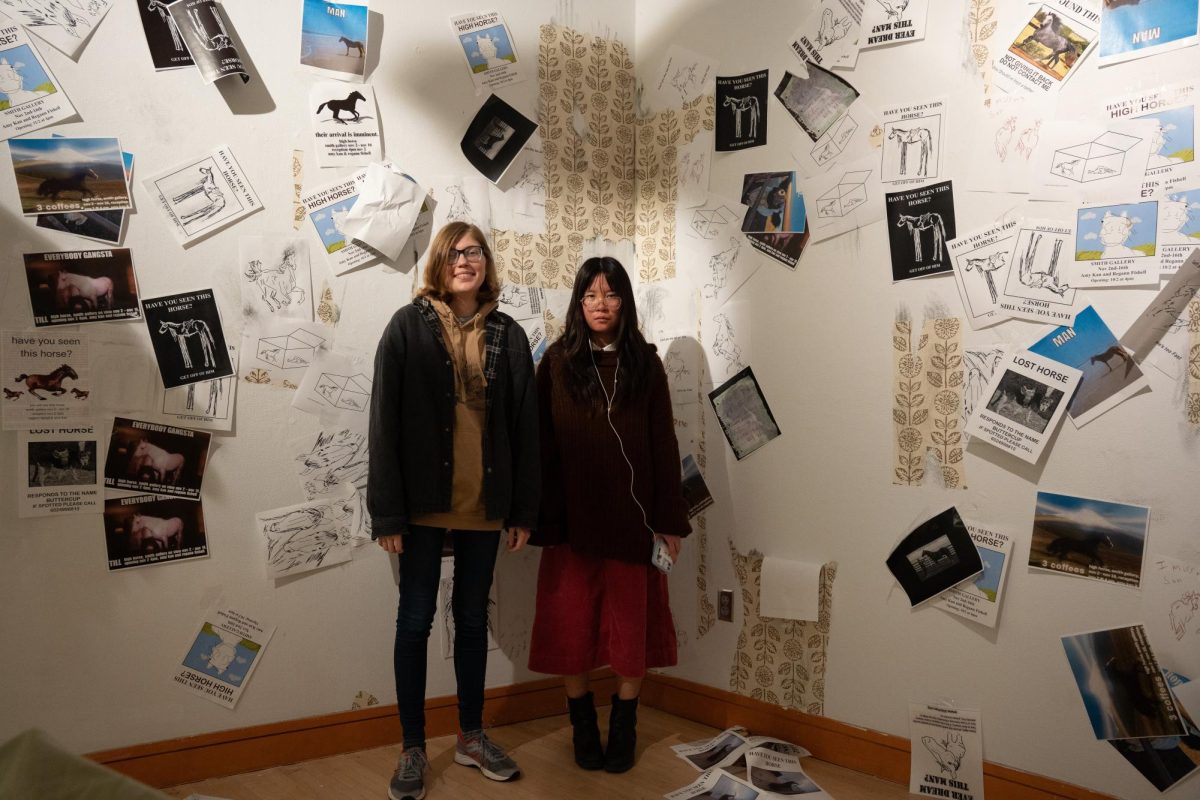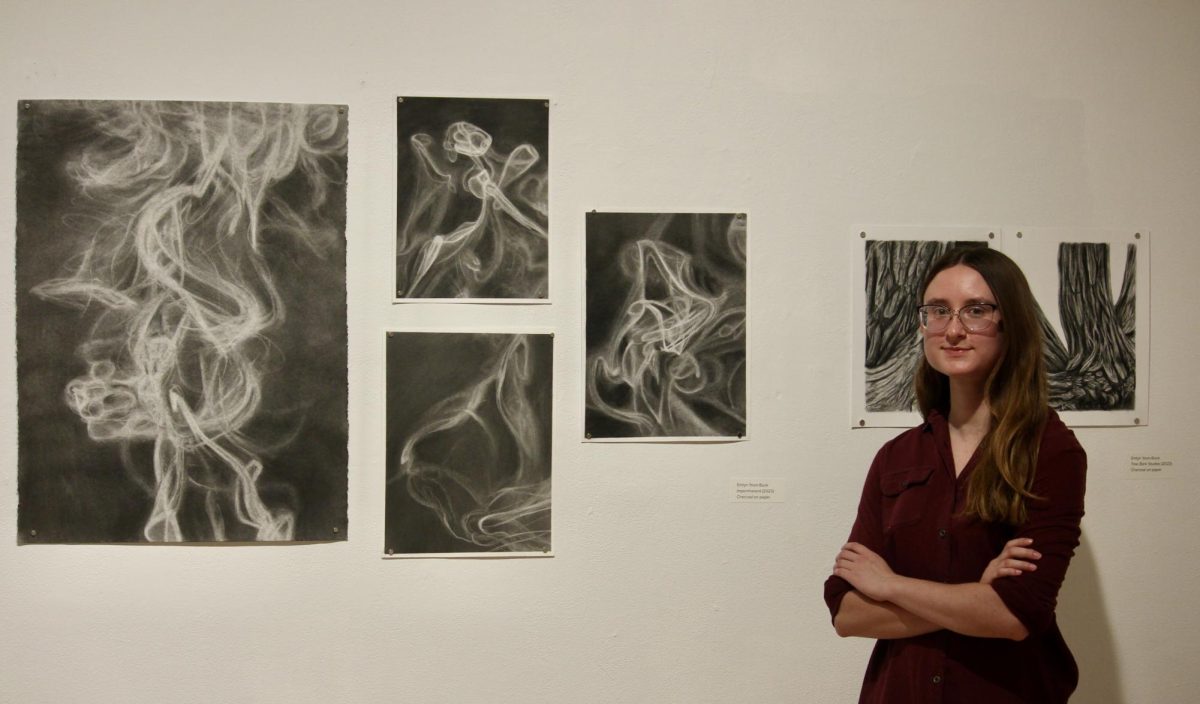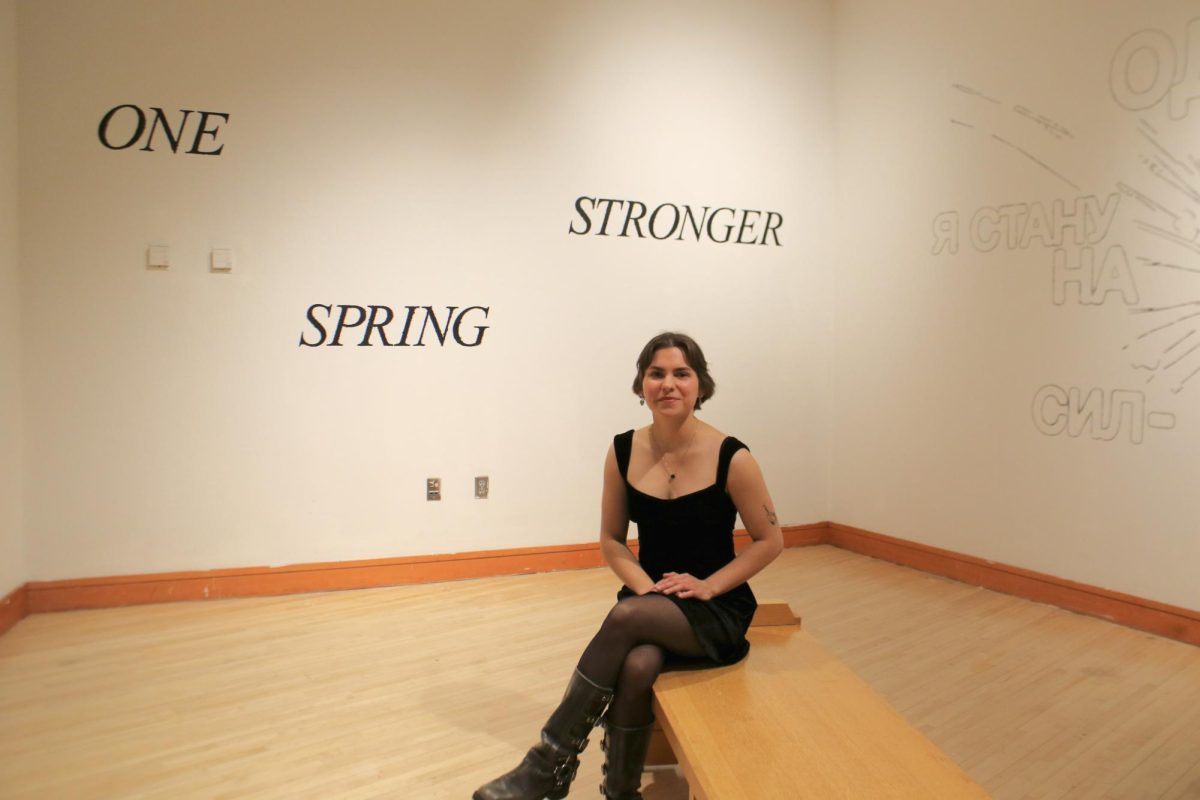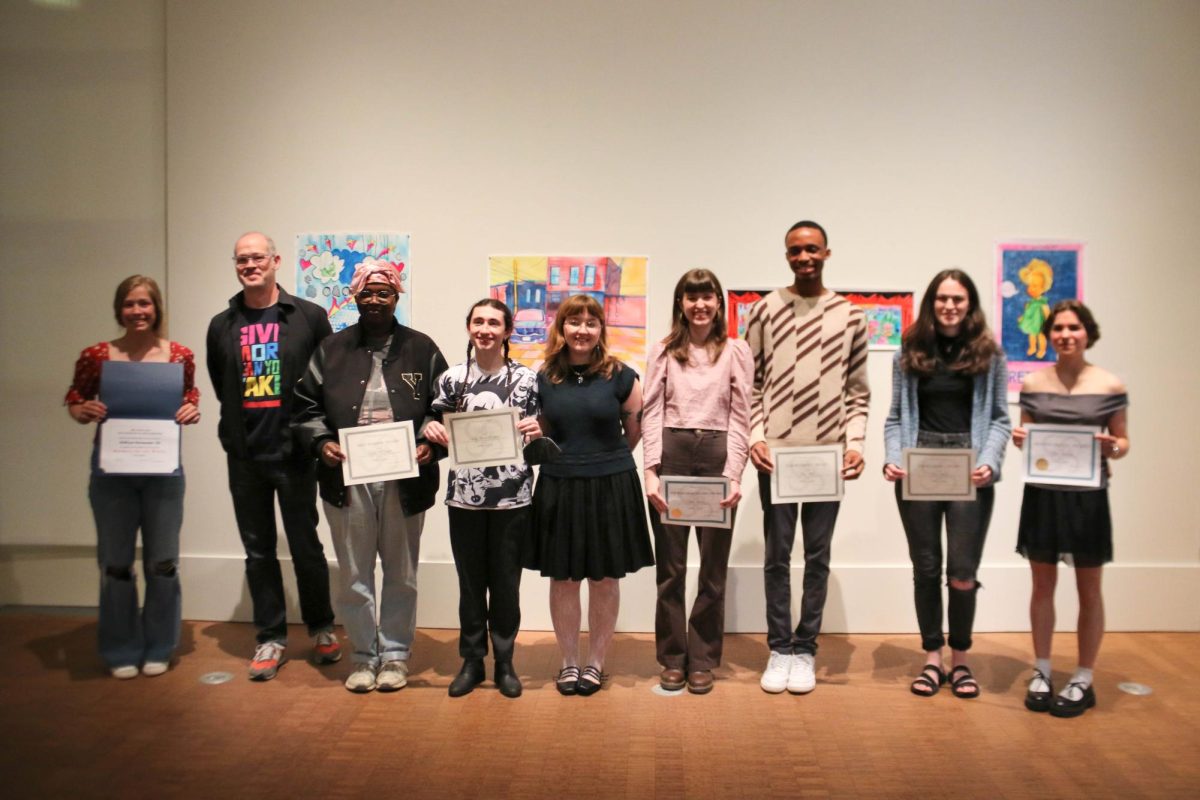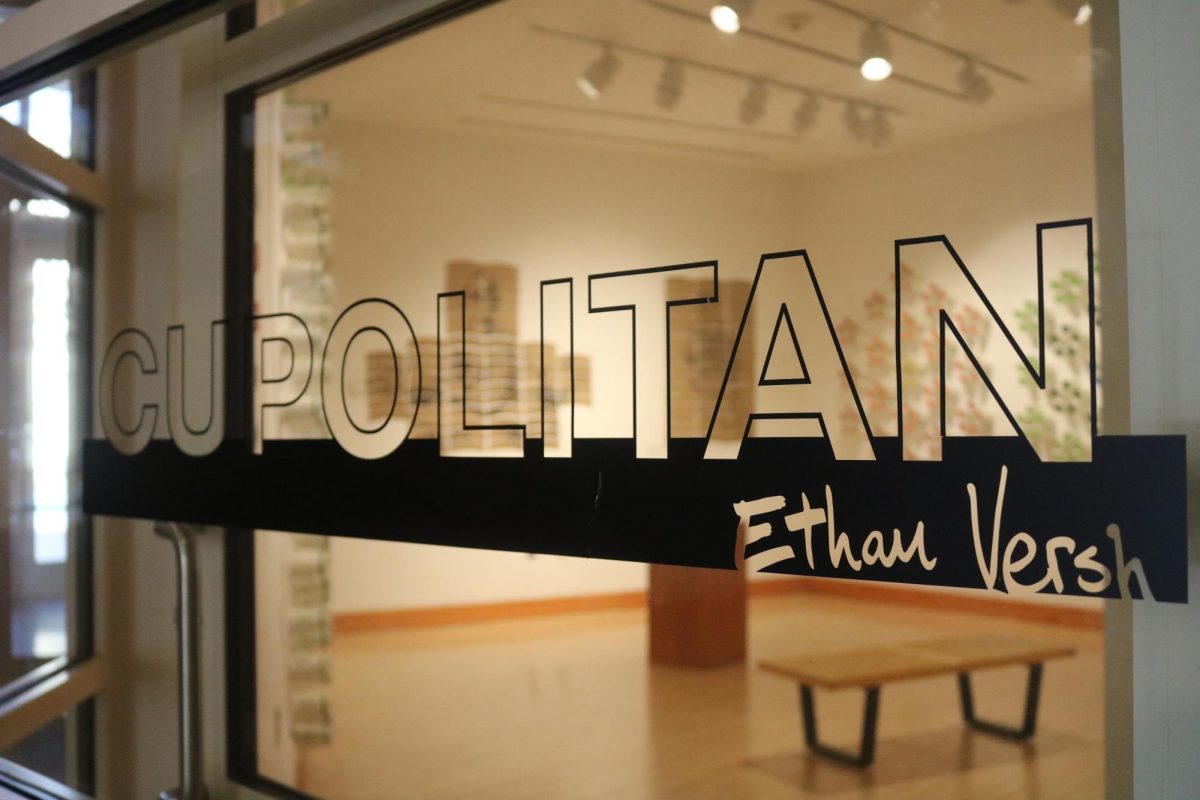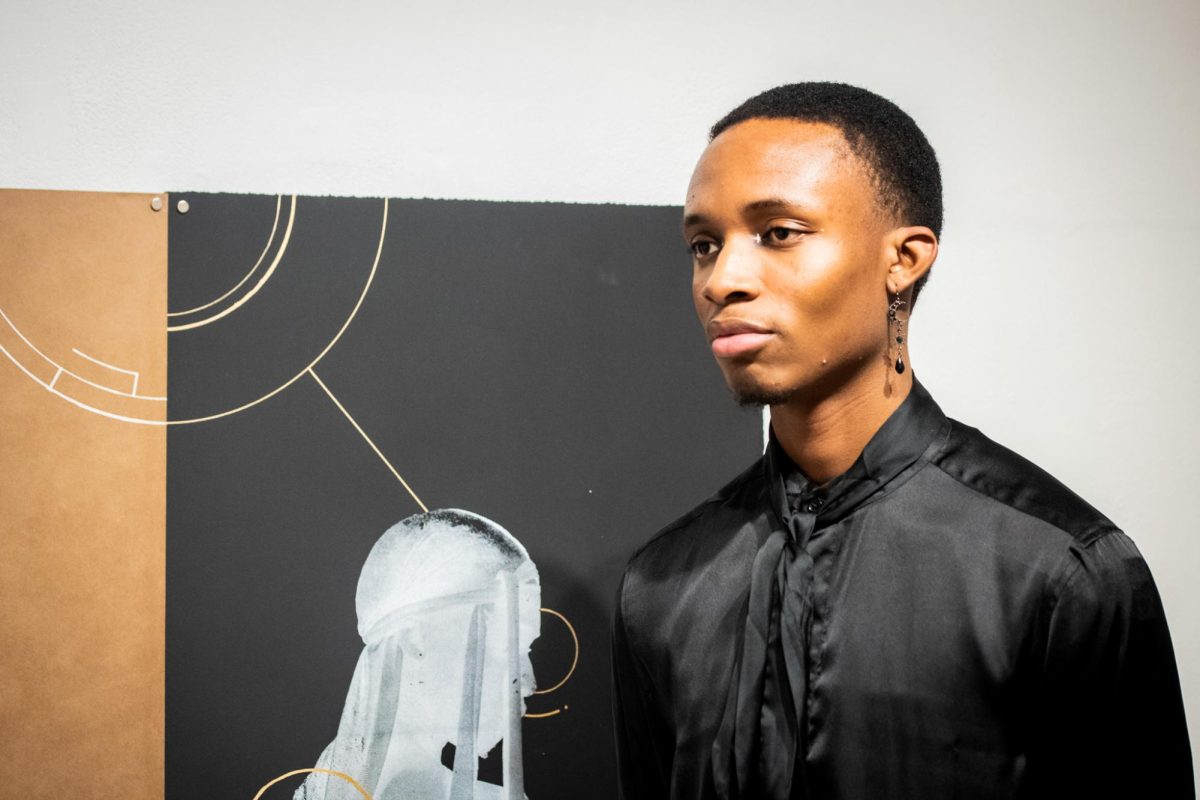By Zoe Fruchter
fruchter@grinnell.edu
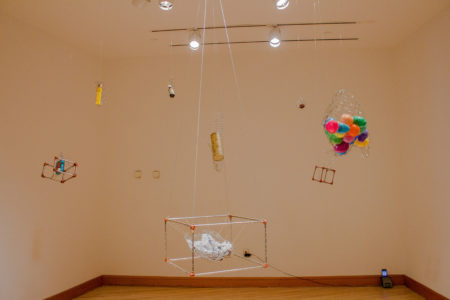
While waiting in a long line for lunch at the Dining Hall, you may notice a small room to your left. This is the Smith Gallery, a room that has hosted the work of 12 years of Grinnell College art students, offering a fascinating view into the creative culture of the College.
The gallery is named after Edith Renfrow Smith ’37, the first African American woman to graduate from Grinnell College. Since its inception in 2006, it has consistently hosted exhibits featuring both students and visiting artists. The gallery often features the projects of studio art majors, but any student can apply to have a show in it to experience the process of curating and showing at a gallery.
“The Smith’s primary function is as a pedagogical tool to give students experience setting up and installing and planning their own show,” said Joe Lacina, the College’s art technician. “It relies on the students showing to take initiative and be involved in all aspects of what it would mean to show in a professional gallery.”
The Smith occupies the space between a professional gallery, such as Faulconer Gallery, and shows of work from art classes.
“[The Smith Gallery] is a professional gallery that’s part of Grinnell College but less rigid than other structures,” Lacina said. He himself had an exhibit in 2017 with a show he described as “weird and normcore.” Lacina filled in after a visiting artist dropped out of their slot, so he has firsthand knowledge of both the challenges and opportunities of showing work at the Smith.
“It’s a really small space so that kind of limits what you can do and how elaborate the show can be … but since it’s so small you’re able to experiment and do additional things that you wouldn’t do in a more traditional space,” Lacina said.
The current exhibit on display is “Capsus Corpus,” created by studio art major Helen Lant ’18. Lant wrote in an email to The S&B that her show focuses on “memory and the way we leave traces of ourselves that are not related to our bodies: the way we smell, foods we like, the sounds we make and all the little things that make each person an individual. This has been influenced by dealing with my mother’s fight with cancer, which has led me to notice the ways in which she is present in my life outside of her physicality.”
Lant wrote that deciding to display this very personal and emotional work in the Smith was challenging. Because of its central location, the Smith is easily accessible by the entirety of campus.
“Did I want people to know what exactly I was grappling with? What would the audience take from it if they didn’t know the weight behind this? I eventually decided that to keep my personal influences private would be to betray the emotion and power that went into creating this exhibit, and am happy that I decided to be open about the tough subject I’m dealing with,” Lant wrote.
Another challenge Lant described was how to use the space effectively. Lant’s show consists of objects suspended from the ceiling, framed with metal boxes and wrapped in wire. There is also an auditory component that plays on loop in the space. Lant wrote that her work “doesn’t take up very much of the space, so deciding how I’d like the viewer to spatially relate to my work was very influential.”
Lant’s exhibition follows Anne Roger ’19’s show, “holding my own.” The show featured mixed media works on walnut dyed handmade paper and examined “the impermanence and intangibility of memory, but also its realness — that memories continue to appear in your mind even when you forgot you remembered them,” according to the informational flier that accompanied the exhibit. The exhibit featured paper that Rogers made during an internship with Cave Paper in Minneapolis. Rogers crumpled the paper and folded it in the shape of maps, building upon her previous explorations of the practice of mapping memories.
Computer science and studio art double major Beatriz Herce-Hagiwara ’18 will show at the Smith from Feb. 24 to March 10 and Clara Bertaut ’18 and Julia Cory ’18 will exhibit their work after spring break. In May, the Smith Gallery will host the Advanced Studio Exhibit and the 2018 Senior Showcase. The Smith’s packed schedule attests not only to the creativity of Grinnell’s students but also to the versatility and power that even such a small space can hold.
“There’s lots of weird architecture around campus,” Lacina observed. “What’s this little nook and how can it be activated and seen through a different lens?”



















































